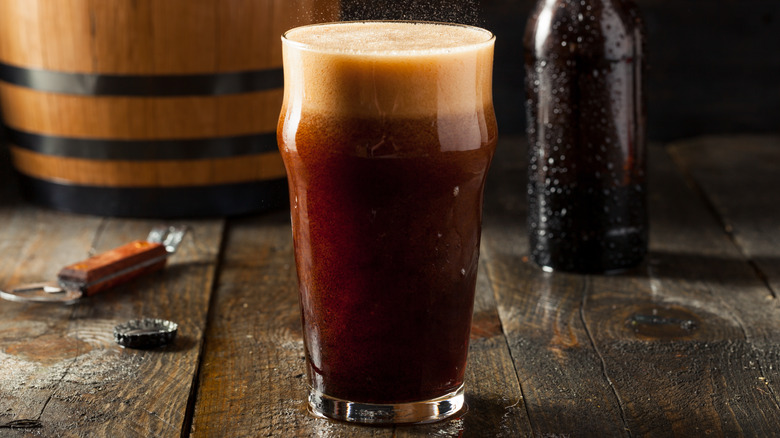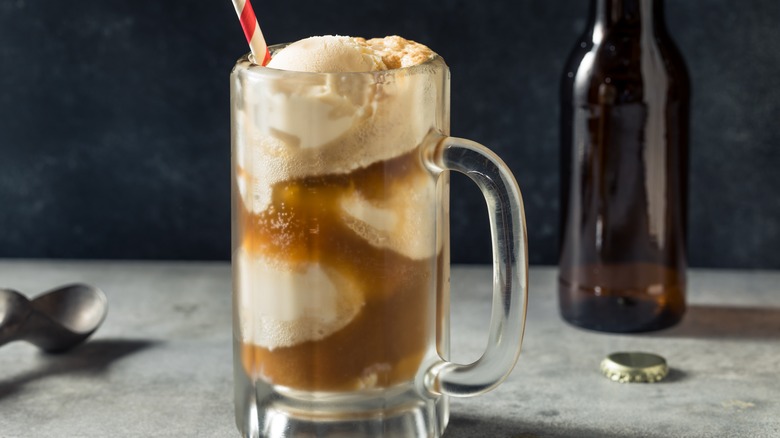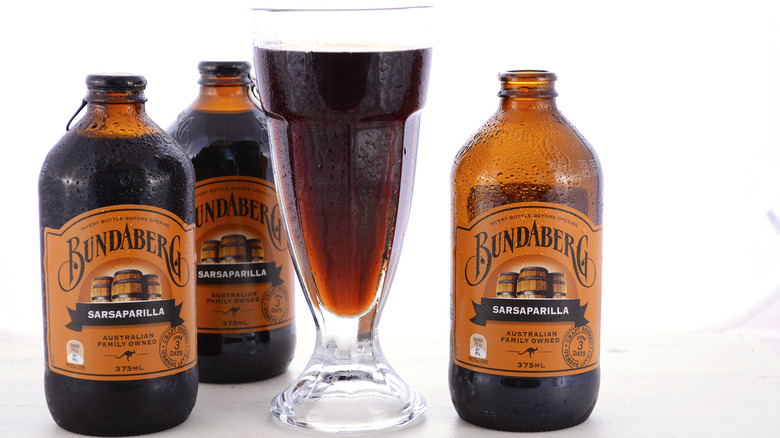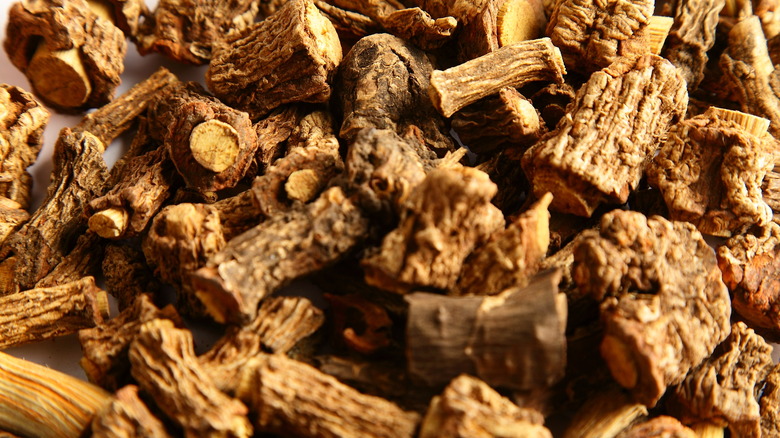Root Beer Vs. Sarsaparilla: What's The Difference?
There is something inherently satisfying about hearing the crack and sigh of a soda pop can being opened, or the tinkle of glass bottles as you pull a cold one out of the refrigerator. Even the people who don't drink carbonated beverages feel the aesthetically pleasing sensory draw we have built around soda pop in the United States.
But what is soda pop, really? Just a sweet, nonalcoholic drink with bubbles? Basically! Britannica broadly defines soft drinks as ones that were originally meant as a substitute for hard liquor in the United States (but brought with them a slew of other health issues). It is believed that the first soda pop was invented sometime during the 18th century and was made with a mix of chalk and acid. However, as time went on, carbonation techniques were cultivated, and "soda water" entered the marketplace (via Bundaberg). Today we have all sorts of bubbly goddesses like Pepsi, Fanta's orange soda, Coke, ginger ale, and cream soda — you get the picture. Some of these brands and their varieties can't even be compared, but when it comes to the root beer and sarsaparilla flavorings, it can be hard to find the difference.
What is root beer?
Some of you might not have even heard of sarsaparilla before and are only familiar with root beer. But even if you've popped open a bottle of the stuff, do you actually know what the flavor is? Many of us enjoy a variety of delicious-tasting drinks without asking ourselves the all-important question: What is this made of?
Even though it has "beer" in its name, root beer is not alcoholic today. Root teas and medicinal elixirs were quite popular up until the modern-day era and were heavily used by the native tribes of North America (via Sprecher Brewery). Many of the indigenous peoples across the continent used plants such as sassafras, wintergreen, and sarsaparilla for their health benefits, and when European invaders made contact with these tribes, they adopted the technique.
Difford's Guide says that what we consider root beer today was inspired by the sassafras brew the First Nations people used medicinally. The root of the plant gave the beverage its flavor and was enjoyed by popular historical figures such as Benjamin Franklin. We have since sweetened and carbonated the beverage into the soft drink we know and love today, however, because sassafras roots were banned by the FDA in 1960, root beer is now flavored using a mix of elements like wintergreen and anise (via Difford's Guide).
What is sarsaparilla?
While root beer was traditionally made from the sassafras root, sarsaparilla is brewed from the sarsaparilla plant, which is a tropical vine native to Mexico, Jamaica, the Caribbean, South and Central America, and some parts of the Southern United States (via American Indian Health and Diet Project). According to Healthline, it was consumed heavily in the past for its medicinal qualities and used to treat all kinds of ailments including psoriasis, arthritis, and rheumatism. Some also believed that the tuber would cure syphilis. It has also been concluded that the sarsaparilla beverage may contain anti-cancer and anti-inflammatory properties.
In the early 19th century, a drink by the name of "sarsaparilla" hit the markets; however, Healthline claims that — even though the name boasts that of the tropical plant — the producers of this sarsaparilla drink used sassafras root to make it taste more like root beer. Today, most sarsaparilla drinks use artificial flavoring, though Bundaberg brewing company's recipe uses real ingredients such as the popular licorice root, ginger root, vanilla bean, molasses, and of course, sarsaparilla root!
Sarsaparilla vs. sassafras roots
So, before the good old FDA bans and the creation of the artificial flavor substitutes, root beer was traditionally made with sassafras, and sarsaparilla was made from sarsaparilla. While we touched on these plants a little above, here we will truly dissect the difference between these two plants. First and foremost, they are not a part of the same family. According to an article written by James M. Stephens and published by the University of Florida, sarsaparilla is made of various species of Smilax plants, which are underground tubers, whereas sassafras is a part of the laurel tree family.
On a more culinary note, Miss Vickie says that sassafras has that basic root beer taste that is reminiscent of anise, eucalyptus, and other earthy tones whereas sarsaparilla has more intense and bitter notes. Sassafras (while poisonous in high quantities) and sarsaparilla are both still used medicinally today — though they are used to treat different conditions (via VeryWellHealth). While the soda pops we know and love are made using imitation flavors nowadays, according to Sprecher Brewery, these potent supplements are both still available in many forms — like teas and oils.



